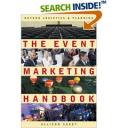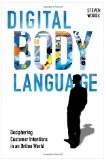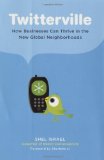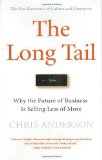PRMM Interview – John Grosshandler

As part of the PRMM Interview series, I am interviewing thought leaders in PR, marketing, social media, and virtual events to hear about innovations, trends and technologies impacting our industry. This week, I asked virtual events vetaran, John Grosshandler is Director of Virtual Engagement with Maritz, to provide insight on the evolution of virtual events, challenges facing the industry and future trends. Here is a brief bio (Note: I was previously employed by Inxpo):
In 2004, John launched a first of its kind virtual trade show called eComXpo which became the highest-grossing, longest-running virtual trade show ever held. In 2005, after initially being their first customer, John joined InXpo, the virtual event platform provider that powered eComXpo. While there, he was the Virtual Event Strategist on hundreds of virtual events for associations (e.g. HIMSS, National Association of Realtors), corporations (e.g. Cisco, ATT) and publishers (e.g. UBM, Ziff Davis). While at InXpo, John authored the virtual event industry’s first Best Practices Guide. In his role at Maritz, John is responsible for their virtual event offerings, including supporting their channel partner Freeman.
Tell me a little bit about yourself and how you got into virtual events?
My background has been in sales and marketing roles for cutting edge technology solutions. After a successful 8 year run at a software firm pre/during/post the tech bubble, I had the opportunity to start my own business. In 2004, I launched a start-up around the idea of a virtual trade show aimed at eCommerce marketers. While there had been a number of attempts at virtual trade shows before mine, most of them were quite boring and I thought a business could be built around a more engaging type of virtual event.
How has the industry changed since you’ve started?
The evolution in this space has been extraordinary on many fronts. First has been the realization that the technology is only one component of a successful event, and that you need to spend at least as much time on the strategy, content and marketing. As a result, agencies like Maritz, Freeman and others are building practices to help event organizers put on higher quality events with less effort. Another evolution has been around the types of events held. From 2004-2008, almost all the action was publishers putting on virtual trade shows to replace lost revenue from their declining print ad sales and subscriber base. In 2009, you started to see associations more effectively creating hybrid extensions to their physical conventions. 2009 is also when more and more corporations starting leveraging virtual for a variety of events, ranging from sales meetings to user groups. A welcome change has been the technology platforms themselves, which increasingly have very robust functionality and can handle ever-increasing numbers of virtual attendees. Finally, there’s less talk these days about purely virtual events, and more about hybrid and blended events which I believe is the future.
Adoption of virtual events & meetings technology has increased significantly due to the recession. What challenges do you see for mainstream adoption of this technology?
Although the adoption has increased significantly, we’re still only scratching the surface. One report suggests the virtual event space will grow to $18 billion in five years, so we’re still in the “early adopter” phase. To cross the chasm to mass adoption, I think three things need to happen a) the technology needs to become more self-service and less expensive; b) virtual event platforms need to be effectively ported to mobile devices and c) events funded by virtual exhibitors need to deliver more value to those sponsors.
2011 is just around the corner and it’s the time of year for future predictions. What do you see happening for the industry in 2011?
I see 2011 as the “Year of the Hybrid”. The idea that more and more physical events will have virtual extensions, either as pre, during or post the physical event. Whether those virtual extensions are focused on driving more attendees to the physical event, or helping you reach others who weren’t able to make it to the physical event, these extensions are the “killer app” for virtual technology.
Any additional thoughts that you would like to share?
An exciting new use of the technology allows corporations to create virtual extensions to their physical trade show booths. Even if the show organizer doesn’t have a virtual extension to the event as a whole, top tier sponsors are realizing that their own virtual extension can help build buzz, drive attendance to their physical booth and provide a more effective follow-up mechanism for booth visitors, as well as those that didn’t make it to the physical event.
Technorati verification: 9ZGN6GBWBMAT
Using Social Media to Drive Virtual Tradeshow Leads

I authored a guest post on “Using Social Media to Drive Virtual Tradeshow Leads” for It’s All Virtual, an influential blog exploring virtual events and environments. In my post, I highlight key strategies on how you can leverage social media:
1. Identify influencers
2. Engage in conversations
3. Advertise Socially
4. Share Freely
5. Measurement and Tracking
I conclude my post by stating:
One word of warning is to first research and evaluate before plunging in with a social media marketing program, especially when contacting individuals and bloggers or participating in online discussions. While social media marketing takes time and effort, when done well, the results can be spectacular!
What has worked for you?
Optimize Your Tradeshow Presence
Media Alert
Consider issuing a media alert (a smaller version of a press release) one to two weeks before the conference. The purpose is to highlight your participation at the event, why attendees would want to visit your table or booth, and highlight any executives speaking at the conference.
Announce News
Consider announcing significant news at the conference to drive buzz about your company. The news can be a game changer such as a new product, partnership or customer.
Media Outreach
While some conferences will provide you with a media list, don’t completely rely on this as your single source for media. Research local reporters, analysts and bloggers who may be interested in meeting with your executives to learn more about your company.
Social Media
While social media provides marketers more opportunities to directly connect with customers and prospects, it’s critical to engage in the conversation and use it as a listening tool. Monitor the conference hashtag to identify key conversations, consider posting event summaries to your blog or update your Flickr page with images from the show floor.
Consistent Messaging
From the person staffing the booth to your key sales person networking the conference show floor, ensure that everyone is consistent on the key messages you want to communicate at the conference. I recommend creating a one-page cheat sheet that you review with everyone before the conference begins.
What other tips do you have for optimizing your tradeshow presence?
PR Meets Marketing Weekly Articles: January 17, 2023
I know you’ve missed your summary of weekly articles. It’s been a slow start to the New Year, but I how you enjoy this week’s selection.
You can click on the Weekly Articles tag for previous issues or subscribe to the Weekly Articles Feed:
Engagement Overrated? – AdAge just released a survey of marketers and media buyers. I’m a little confused by what this survey means frankly. In the end, different mediums are judged by different criteria. Indicative of this contradictory stance: Survey respondents said it’s print — yet ranked print lowest for delivering results. Online was ranked lowest for engagement but highest for results, while TV was ranked in the middle for both results and engagement.
Baiting for Links – Adotas has an interesting article on how to receive quality links for your website. I’m not sure I agree with adding media mentions into a press release, but there is some good advice for those needing quality links.
Saying Sorry the Right Way – Andy Beal compares two situations of how Search Engine Land and Gizmodo apologized for recent incidents. Andy highlights the five steps for handling such a situation. Hmmm… Twitter, are you listening?
Protecting Your Online Brand – Richard MacManus of ReadWriteWeb wrote a post an email http://www.readwriteweb.com/archives/brand_squatting_what_to_do.php
Why Meet Face-to-Face When Virtual Suffices? – I found this article interesting as part of my role is how to support sales with materials to help in the sell. This article highlights a buyer’s request for an online demo being spurned by sales folks. As a PR/marketing person, this raises a question of what can I do to facilitate the sales cycle. PR has a great opportunity to research, test and introduce new tools that can be used by sales folks. The question is, can you teach a sales person new tricks? =)
Twitter Pals Galore – The good folks at MarketingPilgrim have compiled an impressive list of online marketing folks on Twitter. Have fun finding people to follow!
Raising Customer Expectations – Chris Bucholtz of Inside CRM posted a great article of how to exceed customer expectations. No matter how big a company gets, it’s the little things that win over your satisfied and dissatisfied customers. Being proactive and quick to respond goes a long way then sending an impersonal email that arrives weeks later.
Protecting Your Brand Here, There and Everywhere – Richard McManus of ReadWriteWeb about a recent email exchange from a person using the “readwriteweb” brand overseas. Though I am sympathetic with Richard’s dilemma, I believe he received some bad advice. Richard can probably argue for protection in the US but may lose overseas. In the end, brand protection is brand protection. Always trademark. Even if you’re not planning to expand overseas, consider it. You never know.
Improve PR Programs through Measurement – KD Paine has some useful tips on how measurement provides insight for more effective PR programs. KD uses the word “dashboard” in her post. I believe she means a central place – whether a formal dashboard, database or excel document, that will help you identify and evaluate these points.
Standing Out in the Tradeshow Crowd – Rohit of Influential Interactive Marketing shares his tips for standing out in a tradeshow. Though I don’t agree with Rohit’s suggestion on a giveaway, I do believe he has some valid points. For those folks going to DEMO this month, my one word of advice is to walk to the space, pull people to the demo, and network at the events. Don’t wait for folks to come to you otherwise you won’t get the full bang for buck at the show.
Event Marketing: Five Ways that PR Enhances Events
 The early part of my career was focused on securing speaking opportunities for my clients. In the beginning, speakingopportunities was considered the step child of PR – something you had to include in the program but activity was (and to some degree is) relegated to the end of the month when you had to show progress to the client.
The early part of my career was focused on securing speaking opportunities for my clients. In the beginning, speakingopportunities was considered the step child of PR – something you had to include in the program but activity was (and to some degree is) relegated to the end of the month when you had to show progress to the client.
What I’ve learned is that speaking opps must be framed in the larger context of how can speaking and PR enhance a client’s presence at the conference or tradeshow. And from a marketing perspective, drive quality sales prospects to the booth.
There are many ways that PR can bring value to conference or tradeshow. Here are my Five Ways that PR Enhances Events:
1. Leverage partners: If your client isn’t participating at a tradeshow or conference, determine if a partner will be at the show. If so, consider approaching the partner about joint PR or maybe get access to the media list. The key is developing a pitch that benefits both you and the partner.
2. Sponsorship Package: Consider was level sponsorship your client has at a conference. Oftentimes a sponsor can negotiate access to the attendee list for pre or post show marketing. This can either be in email or direct mail campaigns. For start-ups and companies with smaller marketing departments, there is an opportunity for you to assist with copy writing or provide counsel on the type of information to share with this audience. Something valuable, such as a case study, white paper or webcast that will drive prospects to register for this information.
3. Value of tchokes tchotchke: As quality of sales prospects is key, you have to weigh the value of giving out tchokes tchotchke. As you’re giving something away, you’ll attract people who are interested in the freebie vs being truly interested in your tech or service. However if you’re giving something that is related to your company’s products and services, such as a free trial, consulting time or other valuable information, you’ll attract quality people. Update: Thanks to reader for the correct spelling of “tchotchke.”
4. Speaking Opportunities: Speaking opps are great for driving awareness and positioning your speaker as an industry expert at a show, especially if you have no booth. This requires dedication and working with the conference organizer over a period of several months. It’s key to provie a session that is objective and contains valuable information.
5. Rethink the press kit: For a small company, the press kit may double as the “sales kit.” As many attendees now carry usb or flash drives, reconsider putting together heavy kits. Maybe consider using Moo to create an unusual business that limks to an online press kit. You can include unique logins and passwords for each of your media meetings or just the URL with minimal copy to show attendees. For media, you track activity on the back end while having registration for show attendees to capture prospect information.
One book I’ll recommend was written by Allison Saget, who I worked with on a previous client. She wrote a book titled The Event Marketing Handbook that quotes my former boss and myself. Check it out to get a better sense of the value of tradeshows and conferences.
Let me know what you think and if you have any additional tips.
About
Favorite Service
Recent Comments
- on Going Virtual Isn’t Necessarily the Answer to Replacing Your Physical Events
- on Going Virtual Isn’t Necessarily the Answer to Replacing Your Physical Events
- on Going Virtual Isn’t Necessarily the Answer to Replacing Your Physical Events
- on Going Virtual Isn’t Necessarily the Answer to Replacing Your Physical Events
- on Going Virtual Isn’t Necessarily the Answer to Replacing Your Physical Events
Ads by Google
Favorite Books
Marketing Blogs
PR Blogs
- KD Paine's Measurement Blog
- Micro Persuasion
Virtual Events & Meetings Blogs
- Cisco Virtual Environments
- It's All Virtual
- The Webinar Blog
- Virtual Edge Institute

 Follow
Follow Cece Salomon-Lee is director of product marketing for Lanyon Solutions, Inc. and author of PR Meets Marketing, which explores the intersection of public relations, marketing, and social media.
Cece Salomon-Lee is director of product marketing for Lanyon Solutions, Inc. and author of PR Meets Marketing, which explores the intersection of public relations, marketing, and social media. 


